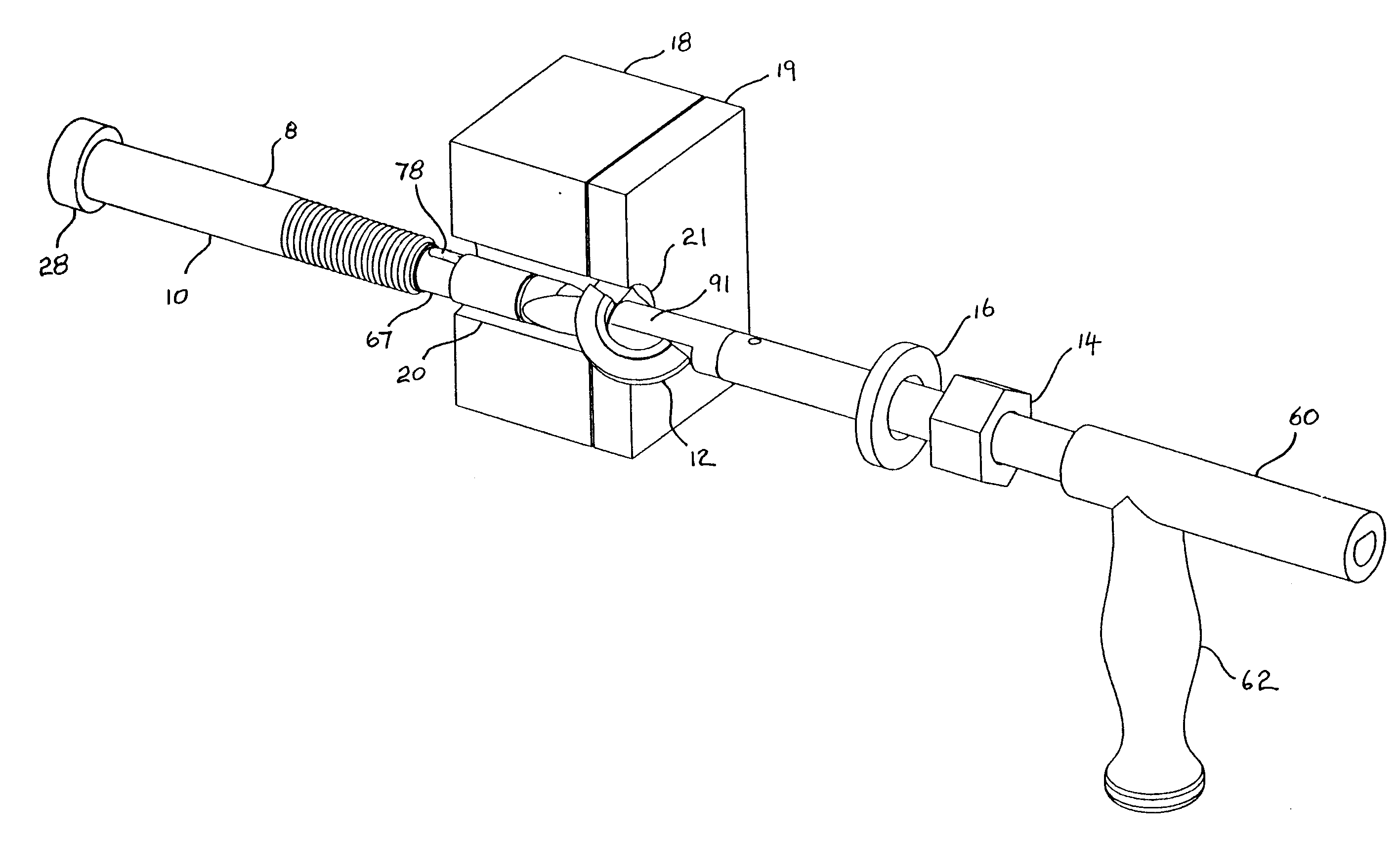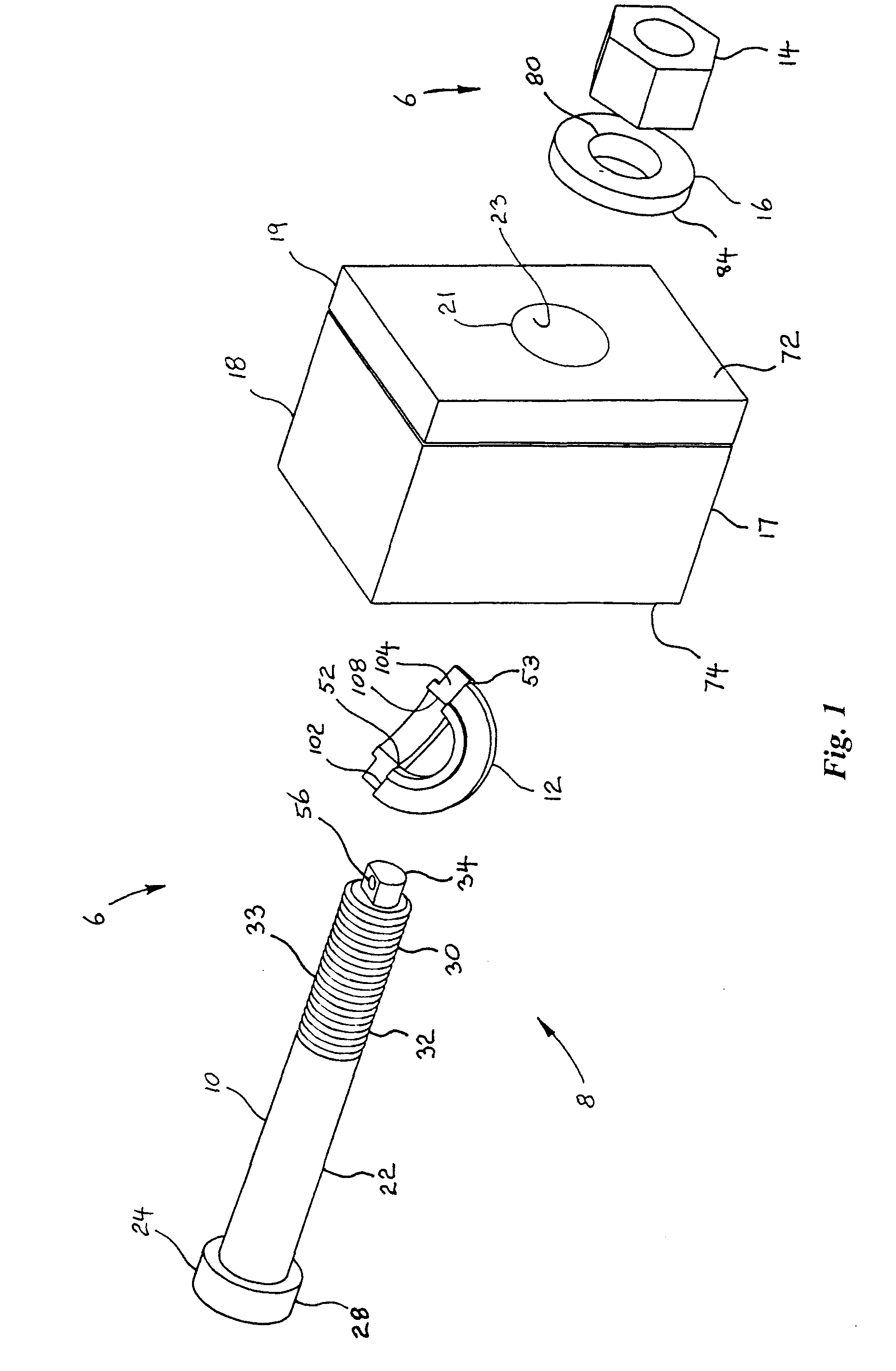Relation to Blind Bolting
a technology of blind bolting and threading, which is applied in the direction of washing machines, manufacturing tools, mechanical equipment, etc., can solve the problems of high dispersion of load, limited use in structural applications, and relatively high cost of bolts to manufactur
- Summary
- Abstract
- Description
- Claims
- Application Information
AI Technical Summary
Benefits of technology
Problems solved by technology
Method used
Image
Examples
Embodiment Construction
[0042]Referring to FIGS. 1 to 12, a fastener assembly 6 comprises a fastener 8, a nut 14 and washer 16. The fastener 8 consists of a bolt portion 10 and a round collar portion 12. The fastener joins two steel plates 18 and 19 (together comprising a substrate) by passing through holes 20 and 21 in them and being tensioned. FIG. 12 shows a diametral half of the assembled and tensioned fastener 8 extending through the plates 18 and 19 with the collar 12, washer 16 and nut 14 engaged.
[0043]The bolt 10 has a shank 22 with, at one end 24, an enlarged head 28 and, at the other end 26, a tail 30 which carries a thread 32 on a threaded portion 33 to suit the nut 14. The head 28 of the bolt 10 is a crown integrally formed with the shank 22. The head of the fastener 8 is thus the combination of the bolt head 28 and the collar 12. On the end of its tail 30 the bolt carries an axial protrusion 34 having a flat end face 37 and a peripheral surface 38. The peripheral surface 38 has a curved portio...
PUM
| Property | Measurement | Unit |
|---|---|---|
| height | aaaaa | aaaaa |
| depth | aaaaa | aaaaa |
| thickness | aaaaa | aaaaa |
Abstract
Description
Claims
Application Information
 Login to View More
Login to View More - R&D
- Intellectual Property
- Life Sciences
- Materials
- Tech Scout
- Unparalleled Data Quality
- Higher Quality Content
- 60% Fewer Hallucinations
Browse by: Latest US Patents, China's latest patents, Technical Efficacy Thesaurus, Application Domain, Technology Topic, Popular Technical Reports.
© 2025 PatSnap. All rights reserved.Legal|Privacy policy|Modern Slavery Act Transparency Statement|Sitemap|About US| Contact US: help@patsnap.com



